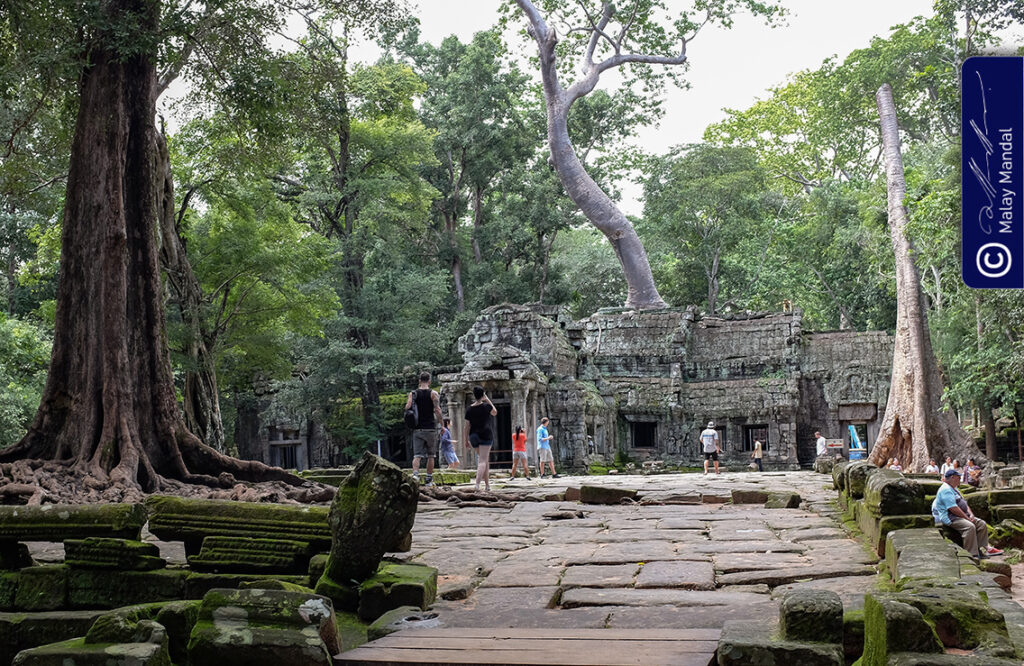
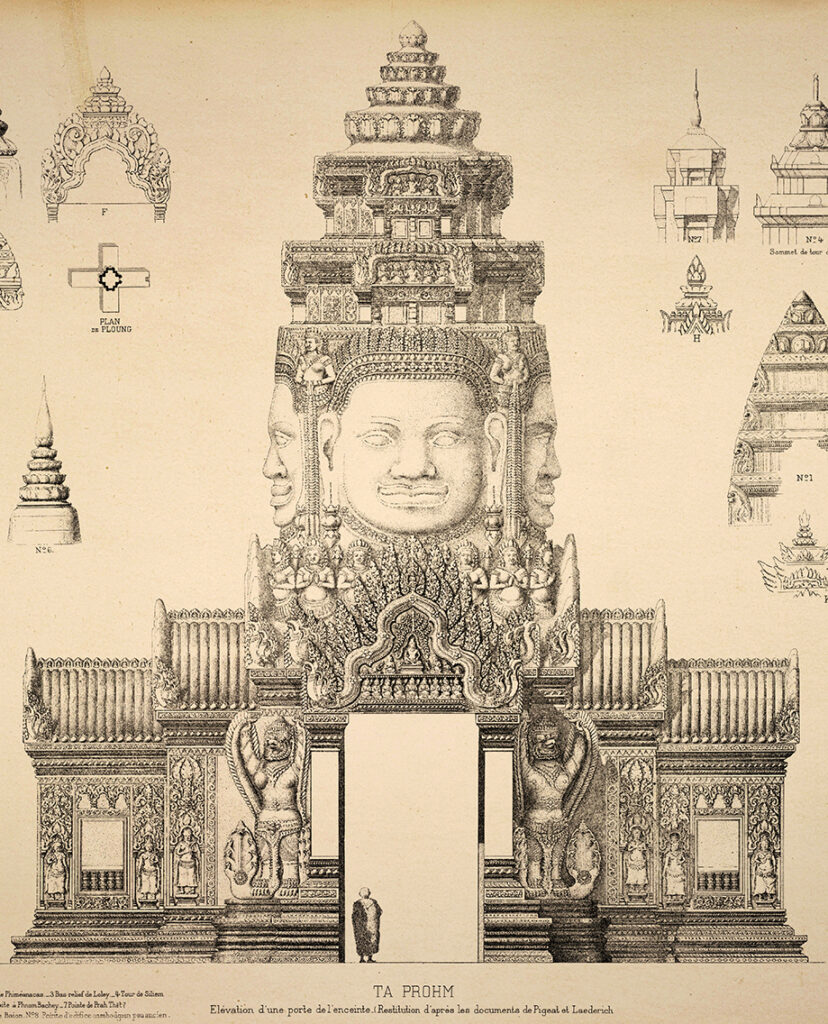
Ta Prohm was one of the principal creations of Khmer King Jayavarman II (r. 1181-1219/20 CE) who embraced Buddhism and left an indelible mark on the geography of Angkor by founding a new city around the temple of Bayon. In his energetic endeavors, he often resorted to revamping old temples belonging to the Brahmanical faith. An inscription stele – a rarity at Angkor – informs us about the temple being commissioned in 1186 CE as a funerary shrine for the sovereign’s mother. Referring to the inscription, Glaize informs us, “… there were 12,640 people living within the interior of the enclosure, including 18 high priests, 2,740 officiants, 2,232 assistants and 615 dancers …” and a total of “… 3,140 villages and 79,365 people were involved in the service of the temple, whose particulars the text lists with a great delight for detail – including notably the existence of 5 tons of gold plates, 512 silk beds and 523 parasols.”
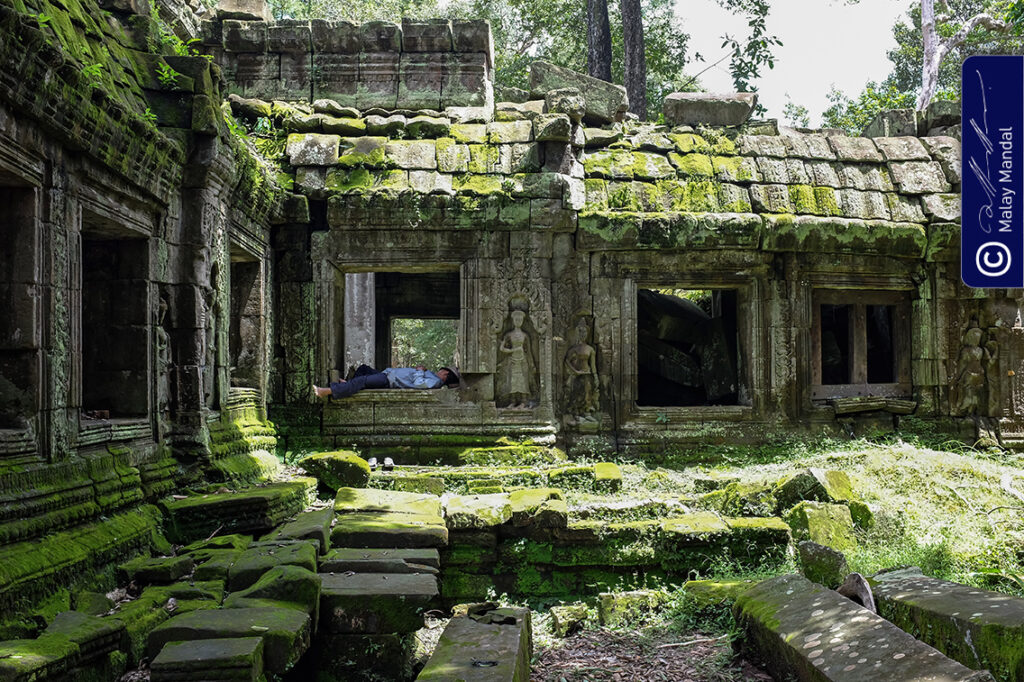

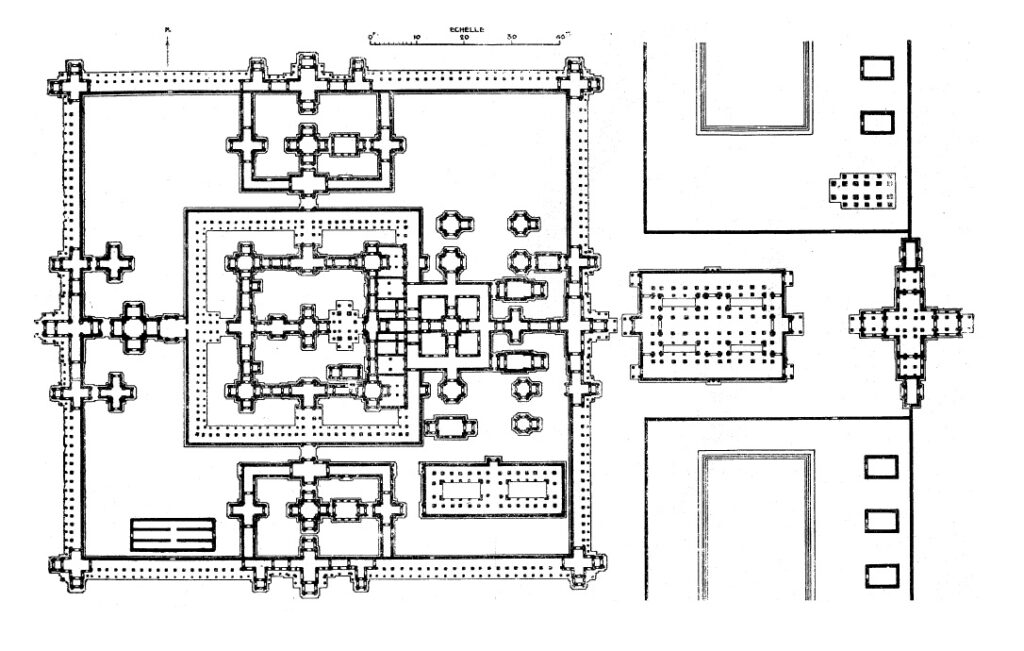
In words of Glaize, “The “horror of the void”, a sentiment particular to the Khmer, has unfortunately favoured the proliferation on this framework of numerous parasitic buildings which, particularly to the east, either enhance or detract without any apparent logic.”
Although, the numbers seem to be exaggerated, the cluttered, tightly stacked ground plan does indicate towards ill-conceived modifications for accommodating the increasing retinue. Lack of symmetry, close placement of subsidiary structures and an effort to overelaborate has made the whole arrangement clumsy. There is no harmony between the portions that looks detached from each other; the passages are claustrophobic and the galleries do not breathe. The sorry state of non-coherence prevails much over the artistic choices made by the architects of Jayavarman VII. Despite the make-over, Groslier has rightly pointed that this temple “was not built in a single throw, and shows traces of numerous alterations and adjustments. Some parts, in terms of style, are quite close to Angkor Wat, while others are to the Bayon.”

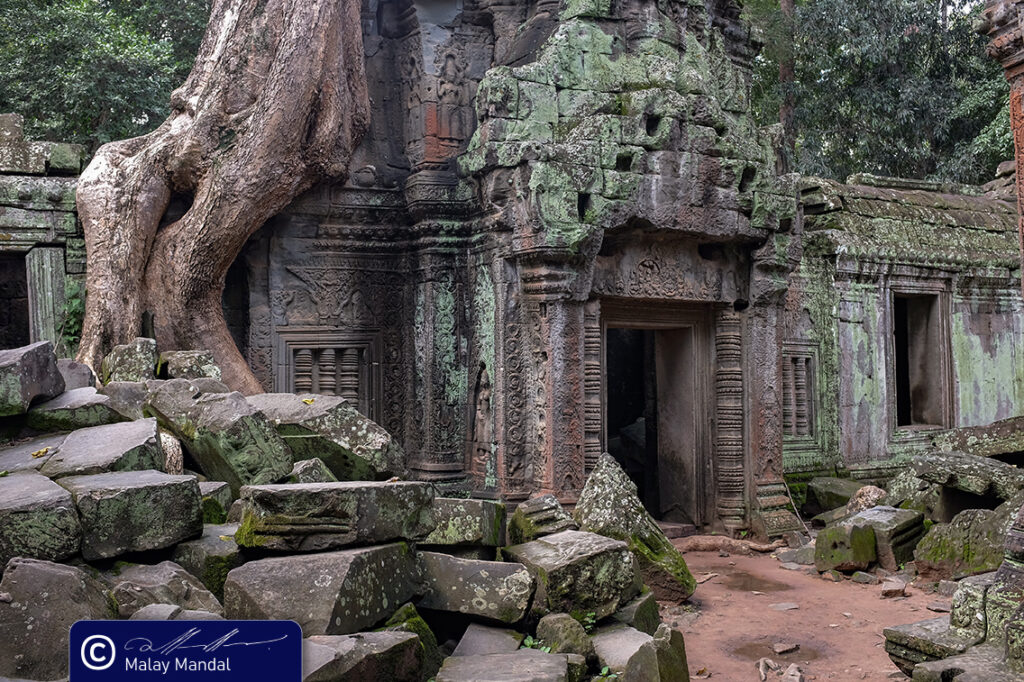


Ta Prohm is unique at Angkor for one more reason. It is known to showcase the natural state in which the temples of Angkor were originally discovered by the French explorers’ way back in the 19th Century CE. Explaining the very genesis behind this idea, Glaize elaborates, “Even though the relentless force of the vegetation is the cause of so much damage, the École Française d’Extrême-Orient felt obliged to leave at least one temple in Angkor as an example of the “natural state” that so marvelled the early explorers, while also showing by comparison the importance of the effort already achieved in its work to safeguard these ancient stones.” In his concluding remark, he summarizes, “It chose Ta Prohm – one of the most imposing and the one which had best merged with the jungle … “



Practicalities | Though the whole complex was left in its original state covered with vegetation clinging on to the stones, much of the old trees have fallen in recent times. Choose Beng Mealea over Ta Prohm if you are looking for that old charm. Ta Prohm is much like any other Angkorian temple, with only a few fading remnants of old vegetation mostly keep under barricades. These man-made blocks, if not ugly distract the eyes and spoil the frames. Because of its recent “Tomb Raider” fame, Ta Prohm receives continuous foot fall throughout the day with people queuing for photo shoots at popular locations. Plan your visit sometime in early morning to avoid the crowd.

